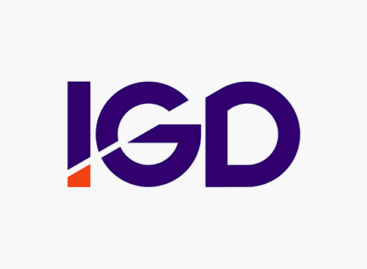Foreign trade of agricultural products with question marks
According to KSH data, our agricultural export expanded almost twice as dynamically as overall export in 2007, achieving record breaking revenues of more than EUR 4.8 billion. Imports totalling EUR 3.2 billion, expanded by 19.7 per cent, which is less than the rate of expansion produced by export. Agricultural export-import produced a positive balance of nearly EUR 1.6 by the end of 2007. The 30.7 per cent increase in exports is a record in itself. However, our prospects looked even brighter in the first half of the year. The relative “loss of momentum” near the end of the year was mainly the result of the depletion of grain stocks. It should also be noted that 60 per cent of the 7.5 million tonnes of grain exported in 2007, came from stocks intended for intervention. Revenues generated from these sales went to the Bruxelles budget. While the exports of animal products, processed food, beverages and tobacco increased by 11-16 per cent, the export of plant products grew by 70 per cent. The driving force behind this trend was the unbroken rise of grain prices seen in 2007. The price of maize approached an 11 year old record, while the price of corn actually broke all time records in March 2007. Many explanations exist for the dramatic rise in grain prices, including the effects of the crisis in the property markets and speculation. Several countries responded to increasing grain prices by freezing prices, removing duties, or imposing export taxes. China introduced an export tax for rice, corn and maize in January 2008, to keep stocks inside the country. This will probably lead to a further increase in global prices. Our export structure has changed, with plant products accounting for a 9.3 per cent higher proportion and a reduction in the proportion of livestock/animal products and that of food, beverages and tobacco. The substantial increase in the proportion of unprocessed products has lead to a reduction in the overall added value represented by export. Regarding the internal market of the EU, the Hungarian market of agricultural products is completely open. No protective measures are allowed by the Common Agricultural Policy. Changes in the structure of imports followed the opposite pattern. Imports are dominated by highly processed foods and beverages, which represent high added value. In the last quarter of the year, exports of fruits, vegetable, milk, dairy products and meat also showed increased dynamism. Exports of tea, coffee, cocoa and spices also expanded in this period. Only sugar products and fish remained unaffected by the boom. Grain and grain products, meat and meat products, and fruits and vegetables accounted for 58 per cent of total agricultural export in the above period. Imports of the food, beverages and tobacco category which account for 53-54 per cent of total imports increased by 21 per cent in 2007. Import of plant products and livestock rose by 24 and 10 per cent respectively. Milk and dairy products produced the most spectacular growth in import, at 39 per cent. The weight of EU markets in our agricultural export continues to grow. The EU accounted for a 7.4 per cent higher share of our total agricultural exports in 2007, than a year earlier. In 2007, the EU accounted for 82 per cent of our exports of food, beverages and tobacco and for 73 per cent of our total agricultural exports. Our exports to the EU increased by 44.6 per cent in 2007, with a 69.2 per cent increase in the markets of new member states. Exports to regions outside the EU showed only minimal growth. Our exports to American, African and Asian markets totalling EUR 190 million account for only 4 per cent of our total agricultural export. Our presence in the largest and most dynamic Asian markets is marginal.
Related news
Related news
IGD: Retail media and increased efficiency will be important in 2024
This article sets out to summarise the retail trend predictions…
Read more >Vegan activist on Forbes’ prestigious “30 successful Hungarians under 30” list
Raul Vida, the founder of Prove magazine, is the first…
Read more >UEFA and Just Eat Takeaway extend partnership
Just Eat Takeaway has extended its partnership with the UEFA…
Read more >



